Making the Connection: Yorkville 5K Recap

One very special feature of the B&O Yorkville 5K is how much it emphasizes its charitable component. Runners don’t just fundraise or donate as part of their registration, but wear the name of their chosen local charity on their bib. At pickup, your kit was handed to you by representatives from your charity, who also kept you in the loop of race details via email.
As someone who works for a charity, I know it’s not unusual to have to explore new avenues to build support for your cause. Seeing so many representatives step up to be a part of the race experience was not only impressive but brought the race’s theme of connections to life.
Failure to Connect
The connections theme even inspired the finisher’s medal, with a design based on a circuit board highlighting the local charities participating and a USB cable in place of a ribbon. It seems the only element of the race where the connections theme didn’t apply was to my GPS.
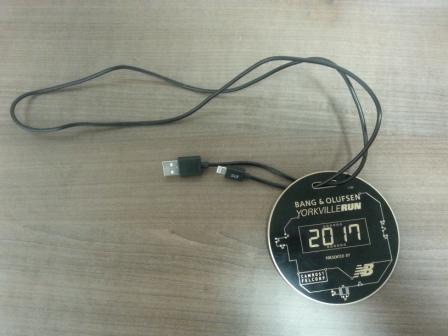
Coach said it wouldn’t be too long before I could lose my “training wheels,” referring to the GPS to keep pace. With enough practice, I’d be able to get to a start line and run my race by feel. The stopwatch function on my Garmin would allow me to gauge my pace at each course marker and adjust accordingly.
Knowing GPS can be volatile, it’s a very practical way to attack a race. If you’ve trained well, you’ve run the pace you plan to deploy on the course and know what that feels like.
Still, and I know I’m not alone in this, watching the pace calculator on my watch is a habit that’s refused to die but slowly and grudgingly.
I understood the idea of running by feel, but wasn’t quite ready to drop the training wheels yet. On this day, they were yanked from under me. With a start line situated in the thick of massive skyscrapers, my GPS had not connected as City Councillor Kristin Wong-Tam announced, “One minute to go!”
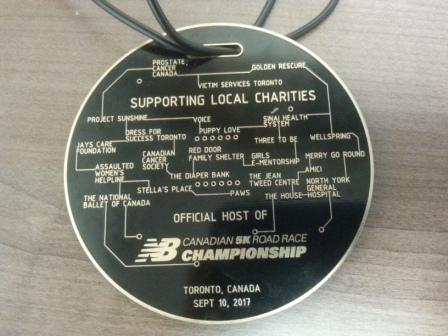
We took off down Bay Street, mostly flat with a little downhill on which it was easy to get excited and push the pace. My watch signalled the first kilometre. I ignored it because we already passed a course marshall holding a 1KM sign.
Taking a right on Dundas, we passed the next marker. In my mind, I panicked, thinking I hammered way too hard and set myself up to bonk. Even as my mind went dark, my body kept moving like clockwork.
The stretch across Dundas is quite short before runners head north on University Avenue. This is where the course gets interesting with an ever so gradual climb that lasts for a kilometre and a half or so. Out of towners who come to Toronto for this race should be aware of this. You’ll feel it, making it all the more important to maintain a “comfortably hard” pace for the first 2K before you enter the pain cave.
Again, I worried, but the fact that I wasn’t passed at any point and wasn’t fading meant my body was still working when I passed the one cheer/water station on course led by the Red Door Family Shelter.
Past the 4K mark and over the climb, I tuned out of my surroundings and ran with whatever I could give until the race ended with a 52 second PB. It’s possible I didn’t look at my watch at all, or was just too delirious to remember.
The Finish
You can’t do much better than a finishing area where you’re actually served by attendants carrying trays of snacks. Bagels found their way to me when I plopped myself on the side of the track at Jesse Ketchum School.
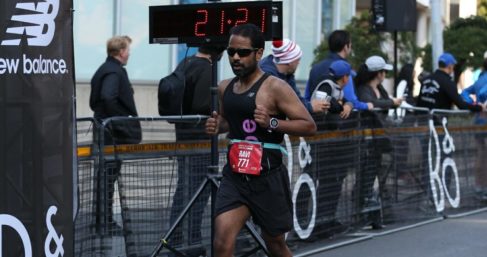
I also had the honour of cooling down on the track at the same time as newly crowned Canadian 5K champion Cam Levins.
Of course our most important takeaway from a race is growth. We’re always told as runners to trust the training. With my training wheels taken away, I actually experienced a race where I had to trust my body and found that against all the doubts my mind could present, it did what it was supposed to. Granted, this is a work in progress and it’s taken years to make even this glimmer of progress.
There’s nothing so wonderful as a mind and body in sync, but when they fail to do so as my GPS did – I’m really pushing this analogy, aren’t I? – your body is capable of carrying you through on all the work that led to race day. Your mind just has to tag along until it’s convinced, and at this race my mind might be a little closer to that connection.
- Ravi Singh





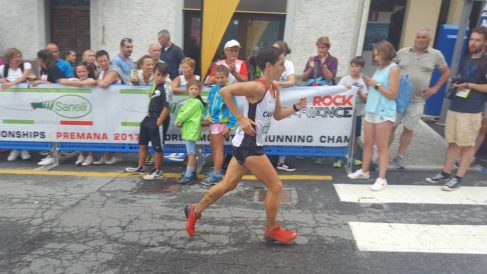
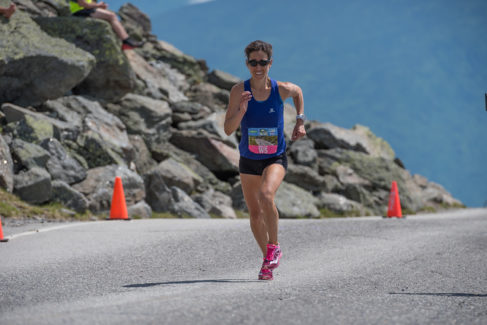
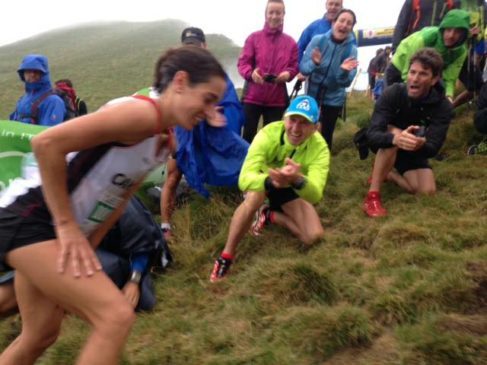
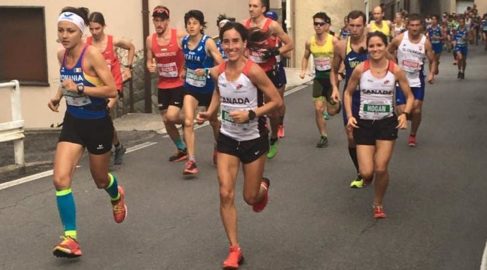

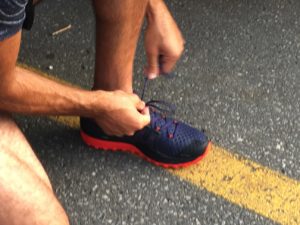

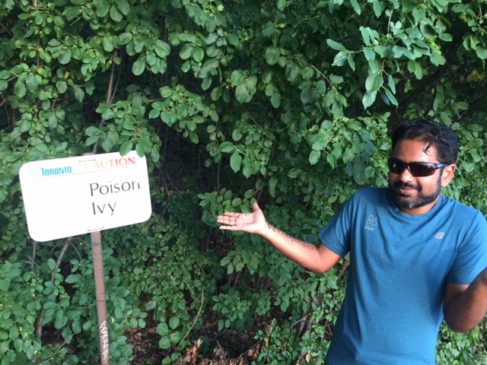
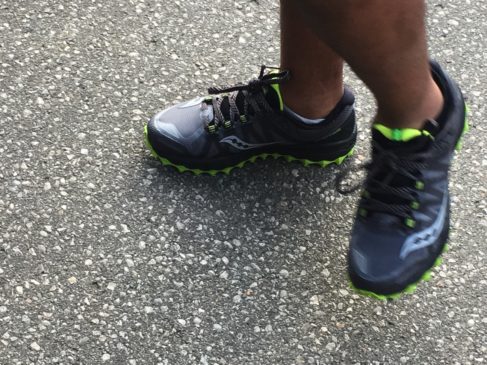
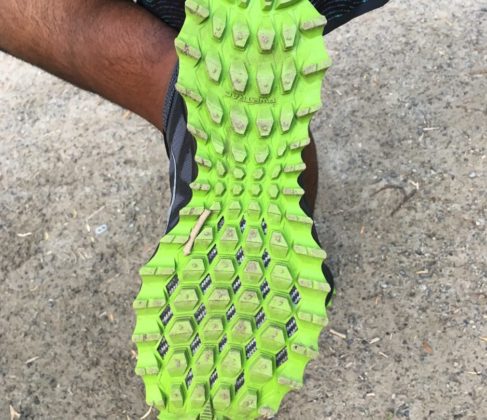

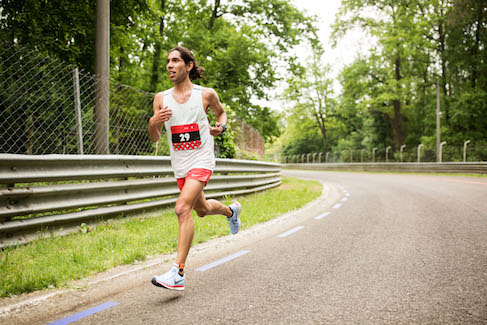

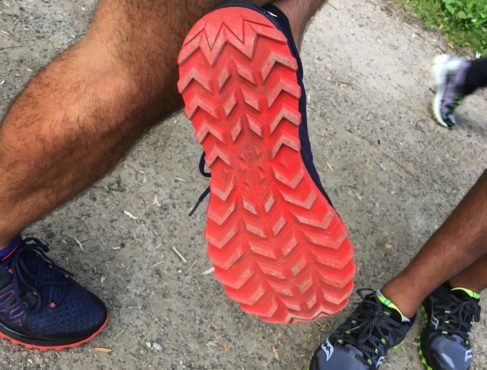


 Our Magazine
Our Magazine Previous Release
Previous Release
